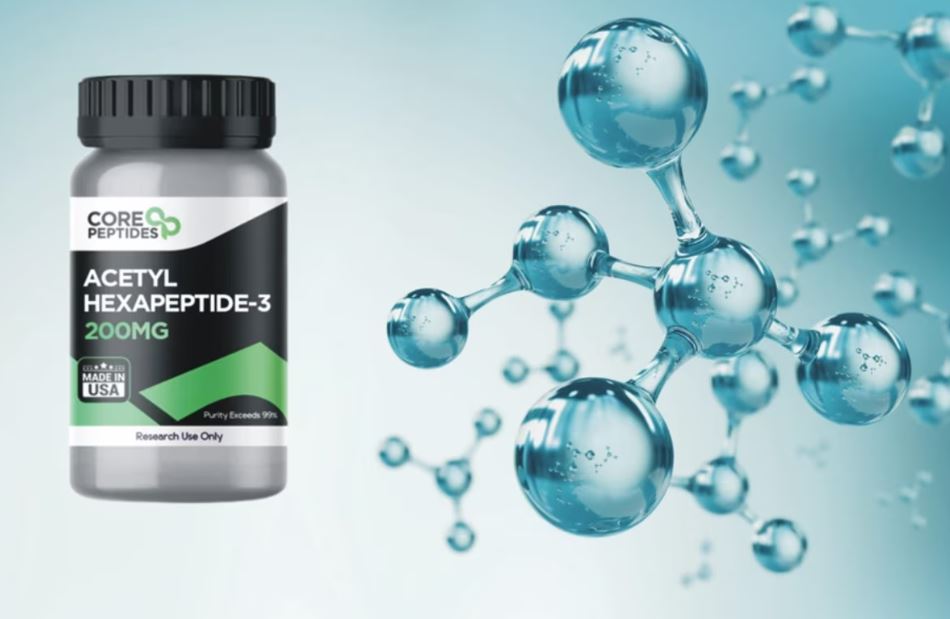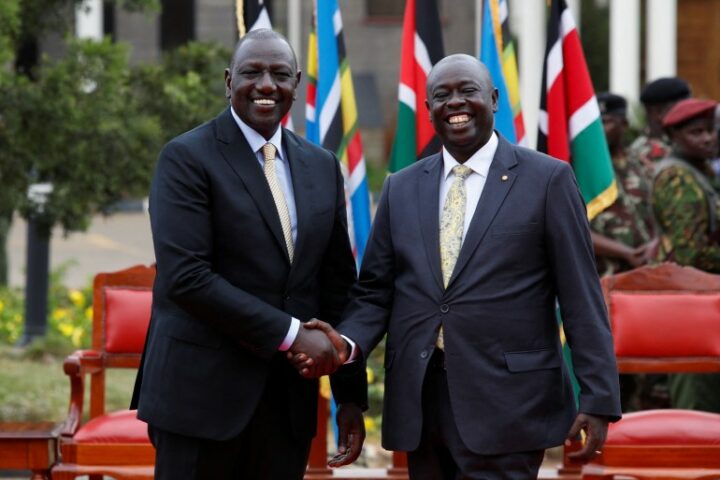 Studies have suggested that fusing the transduction capabilities of the Protein Transduction Domain (PTD) with the functional domain of the Disheveled Binding Motif (DBM) might have a synergistic effect.
Studies have suggested that fusing the transduction capabilities of the Protein Transduction Domain (PTD) with the functional domain of the Disheveled Binding Motif (DBM) might have a synergistic effect.
The Wnt signaling pathway, in which Dishevelled (DVL) plays a central role, is thought to regulate a wide range of cellular functions, including those involved in hair follicle formation and regeneration.
Extensive animal models have suggested that PTD-DBM peptide may be helpful in boosting hair growth in preclinical investigations.
These investigations have purported that the peptide may boost the proliferation of hair follicle progenitor cells, may lengthen the anagen (growth) phase of the hair cycle, and may consequently improve hair follicle size and density.
Activation of Wnt signaling is thought to be a major contribution to these outcomes; however, the specific molecular pathways are still being investigated.
PTD-DBM Peptide: Mechanism of Action
Potential interactions with intracellular signaling components of the Wnt pathway seem to underlie PTD-DBM’s suggested activity in stimulating hair growth. Upon presentation, the PTD-DBM peptide seems to cross the cell membrane and perhaps translocate into the cytoplasm.
Studies suggest that after entering the cell, it may attach specifically to Dishevelled, protecting it from degradation and maybe increasing its stability.
The canonical Wnt/catenin pathway is thought to be essential for hair follicle creation, maintenance, and cycling, and this connection seems to activate downstream Wnt signaling pathways.
Recent studies have suggested that the Wnt/catenin pathway may be very important in the formation of hair follicles. CXXC-type zinc finger protein 5 (CXXC5) has been implicated in a variety of cellular processes, including wound-induced hair follicle neogenesis and hair regrowth, as a negative regulator of the Wnt/-catenin pathway.
CXXC5 is thought to be increased in alopecia’s shrunken hair follicles and arrector pili muscles.
Hair follicle dermal papilla cells were used in further studies, and the results suggested that CXXC5 may have an inhibitory impact on alkaline phosphatase activity and cell proliferation. CXXC5-/- mice were tested to verify the role of CXXC5 in hair renewal, and results proposed faster hair regrowth compared to controls.
Furthermore, it seemed that the addition of valproic acid, a glycogen synthase kinase 3 inhibitor that activates the Wnt/-catenin pathway, greatly stimulated hair regeneration in CXXC5-/- animals.
PTD-DBM Peptide and Hair Follicles
To further understand its potential to stop loss and stimulate new growth, researchers looked at the function of a protein called Protein Transduction Domain-fused Dishevelled Binding Motif (PTD DBM) in hair follicle development.
The potential of PTD-DBM on hair follicle growth and the underlying molecular pathways were examined using a murine model.
Based on the results of this research and those obtained from the control group, it seems that PTD-DBM may have the potential to greatly improve the mice’s hair follicle density, size, and thickness.
Investigations purport that after PTD-DBM is introduced, hair follicle progenitor cells are likely to proliferate at a higher rate, and the anagen (growth) phase of the hair cycle may be extended, as suggested by histological examinations.
Research suggests that PTD-DBM seems to block the degradation of Dishevelled (DVL), hence activating the canonical Wnt/-catenin pathway. Activation of downstream Wnt signaling pathways seems to occur from this interaction, which may in turn promote hair follicle growth.
Based on these data, PTD DBM seems to “stimulate wound-induced hair follicle neogenesis (WIHN) and hair regrowth” and is “a peptide that interferes with CXXC5-Dvl interaction via binding to the PDZ domain of Dvl.”
PTD-DBM Peptide and Wounds
The goals of the present study were to determine if the CXXC-type zinc finger protein 5 (CXXC5) acts as a negative feedback regulator of the Wnt/-catenin pathway and whether the Protein Transduction Domain-fused Dishevelled Binding Motif (PTD-DBM) peptide may act as a modulator of wound healing.
The data suggest that during the early stages of wound healing, CXXC5 interacts with the Dishevelled (Dvl) protein, perhaps leading to negative regulation of the Wnt/-catenin pathway in epidermal keratinocytes and dermal fibroblasts.
CXXC5 overexpression in vitro suggests a possible involvement of the peptide in regulating the expression of -catenin, -smooth muscle actin (-SMA), and collagen I, all of which are markers of myofibroblast development and collagen synthesis.
In addition, it seemed that cutaneous wound healing in CXXC5-deficient animals was faster, with increased keratin 14 expression and likely improved collagen synthesis.
Conclusion
One peptide that suggests promise as a regulator of cellular signaling pathways is the Protein Transduction Domain-fused Dishevelled Binding Motif (PTD-DBM). PTD-DBM seems to stimulate the Wnt/-catenin pathway, perhaps leading to increased cellular responses, by interrupting the negative feedback loop mediated by CXXC-type zinc finger protein 5 (CXXC5) and Dishevelled (Dvl) protein.
The creation of hair follicles and the speeding up of cutaneous wound healing are two areas where research has hinted at its potential. More study is needed to completely understand its mechanics and assess its potential scientific uses.
References
[i] Lee SH, Seo SH, Lee DH, Pi LQ, Lee WS, Choi KY. Targeting of CXXC5 by a Competing Peptide Stimulates Hair Regrowth and Wound-Induced Hair Neogenesis. J Invest Dermatol. 2017 Nov;137(11):2260-2269. doi: 10.1016/j.jid.2017.04.038. Epub 2017 Jun 6. PMID: 28595998. https://pubmed.ncbi.nlm.nih.gov/28595998/
[ii] Lee SH, Kim MY, Kim HY, Lee YM, Kim H, Nam KA, Roh MR, Min do S, Chung KY, Choi KY. The Dishevelled-binding protein CXXC5 negatively regulates cutaneous wound healing. J Exp Med. 2015 Jun 29;212(7):1061-80. doi: 10.1084/jem.20141601. Epub 2015 Jun 8. PMID: 26056233; PMCID: PMC4493411. https://www.ncbi.nlm.nih.gov/pmc/articles/PMC4493411/
[iii] Hyun-Yi Kim et al. Small molecule inhibitors of the Dishevelled-CXXC5 interaction are new drug candidates for bone anabolic osteoporosis therapy. EMBO Molecular Medicine. EMBO Mol Med (2016) 8:375-387. https://www.embopress.org/doi/full/10.15252/emmm.201505714
[iv] Ryu YC, Lee DH, Shim J, Park J, Kim YR, Choi S, Bak SS, Sung YK, Lee SH, Choi KY. KY19382, a novel activator of Wnt/β-catenin signalling, promotes hair regrowth and hair follicle neogenesis. Br J Pharmacol. 2021 Jun;178(12):2533-2546. doi: 10.1111/bph.15438. Epub 2021 May 5. PMID: 33751552; PMCID: PMC8251890. https://www.ncbi.nlm.nih.gov/pmc/articles/PMC8251890/
[v] Lee SH, Kim MY, Kim HY, Lee YM, Kim H, Nam KA, Roh MR, Min do S, Chung KY, Choi KY. The Dishevelled-binding protein CXXC5 negatively regulates cutaneous wound healing. J Exp Med. 2015 Jun 29;212(7):1061-80. doi: 10.1084/jem.20141601. Epub 2015 Jun 8. PMID: 26056233; PMCID: PMC4493411. https://pubmed.ncbi.nlm.nih.gov/26056233/








